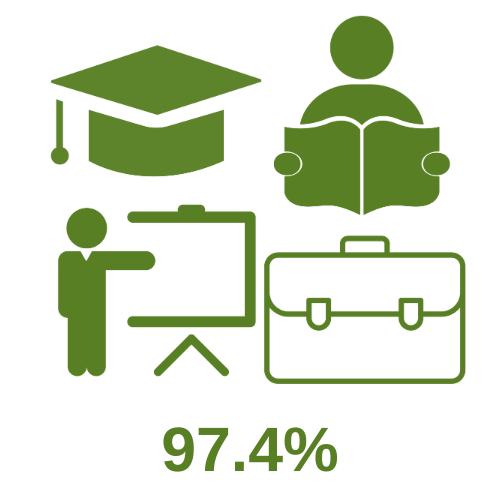Participation rate
About this Indicator
The Annual Participation Measure published by Skills Development Scotland (SDS) looks at the percentage of young adults (16-19 year olds) who are participating in education, training or employment. This is based on the longest held status of the individual over the previous 12 months.
| Indicator | 2018 Baseline | 2021 Target | 2028 Target |
|---|---|---|---|
| Participation rate (16-19 year olds who are in education, employment, training and personal development) | 96.1% participation | At least 97% participation | At least 98% participation |
Source
Skills Development Scotland’s Annual Participation Measure was developed with the Scottish Government to develop a measure of participation which allows us to identify the participation status of 16-19 year olds and not just school leavers. The measure is taken from the shared dataset, managed by SDS, and incorporates data on individuals’ status from key delivery partners including local authorities, colleges, the Department of Work and Pensions (DWP) and SAAS (Student Awards Agency Scotland).
Most recent data
 In 2023, 97.4% of 16-19 year olds were in education, employment, training and personal development. This was the fourth highest participation rate in Scotland. After dropping slightly in 2022, it has now returned to the 2021 target of 97%. .
In 2023, 97.4% of 16-19 year olds were in education, employment, training and personal development. This was the fourth highest participation rate in Scotland. After dropping slightly in 2022, it has now returned to the 2021 target of 97%. . Why do we monitor this indicator?

Looking at the participation rate for our local authority area can help us to understand the opportunities available for 16-19 year olds, as well as whether we are making a difference with what is already in place. The Scottish Government’s ‘Opportunities for All’ commitment offers a place in learning or training to every 16-19 year old who is not in employment, education or training.
This indicator contributes to monitoring the desired outcomes outlined in the People and the Place priorities of the Partnership Plan.
“People will be accessing employment, education, training and services in innovative ways designed to minimise the barriers to involvement for all.”
